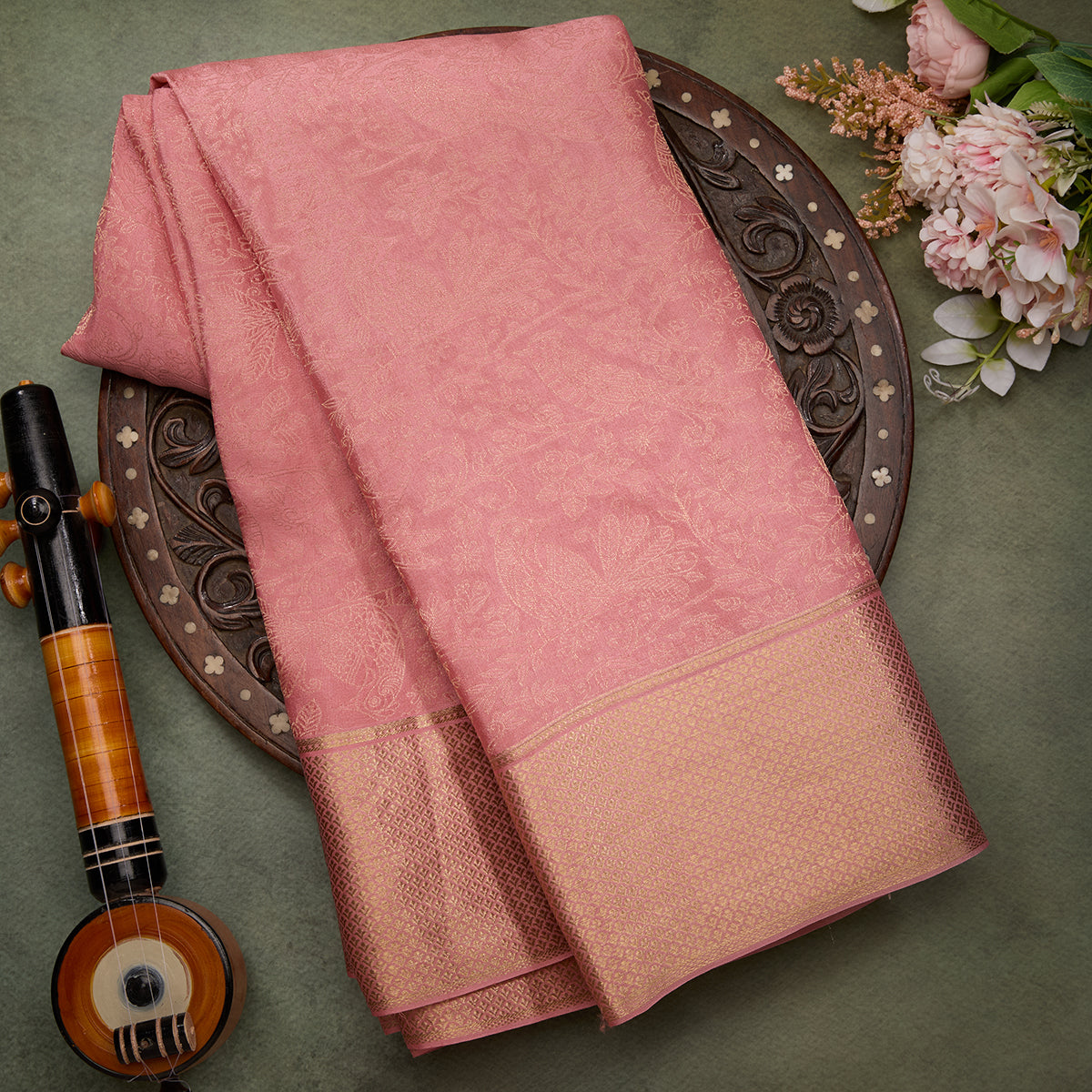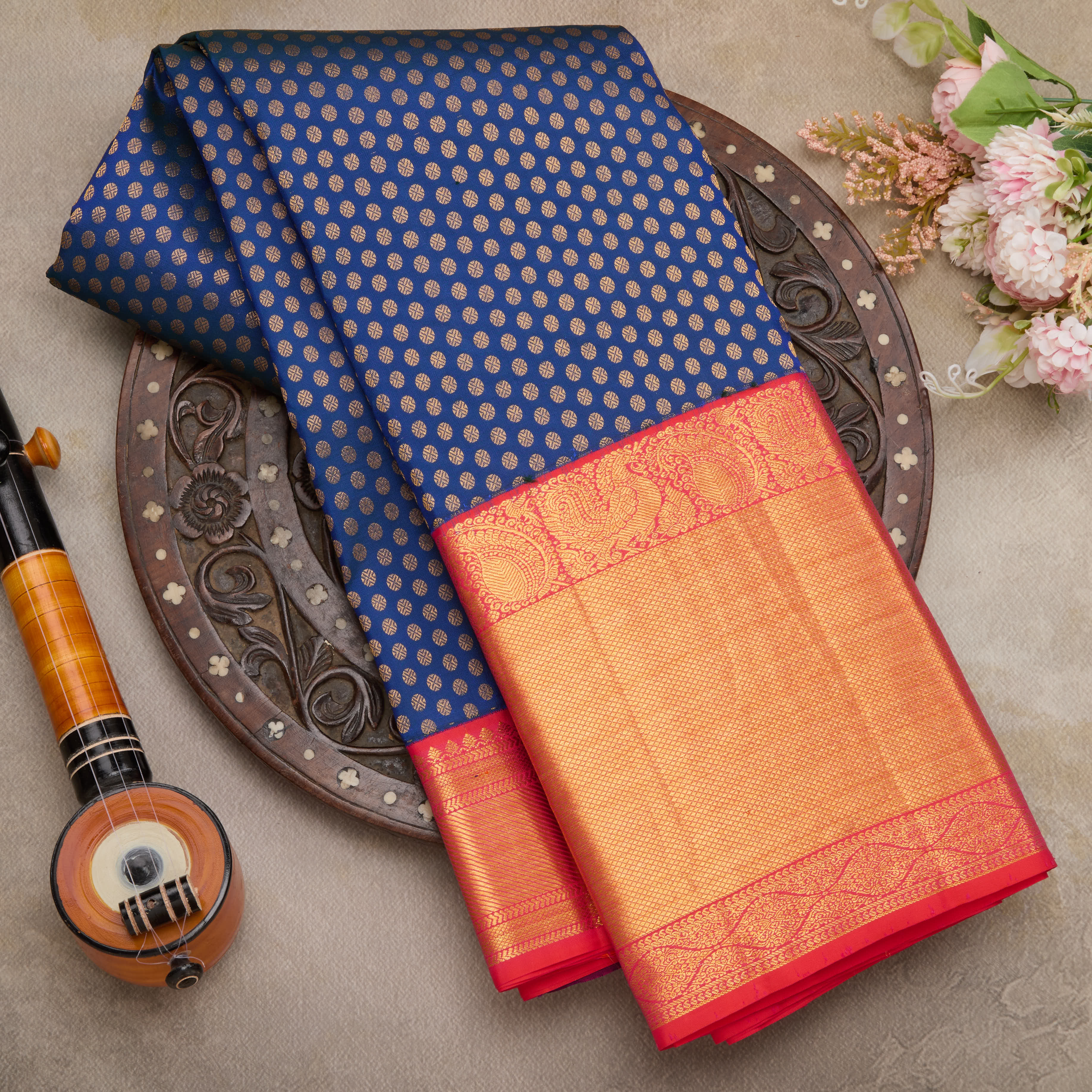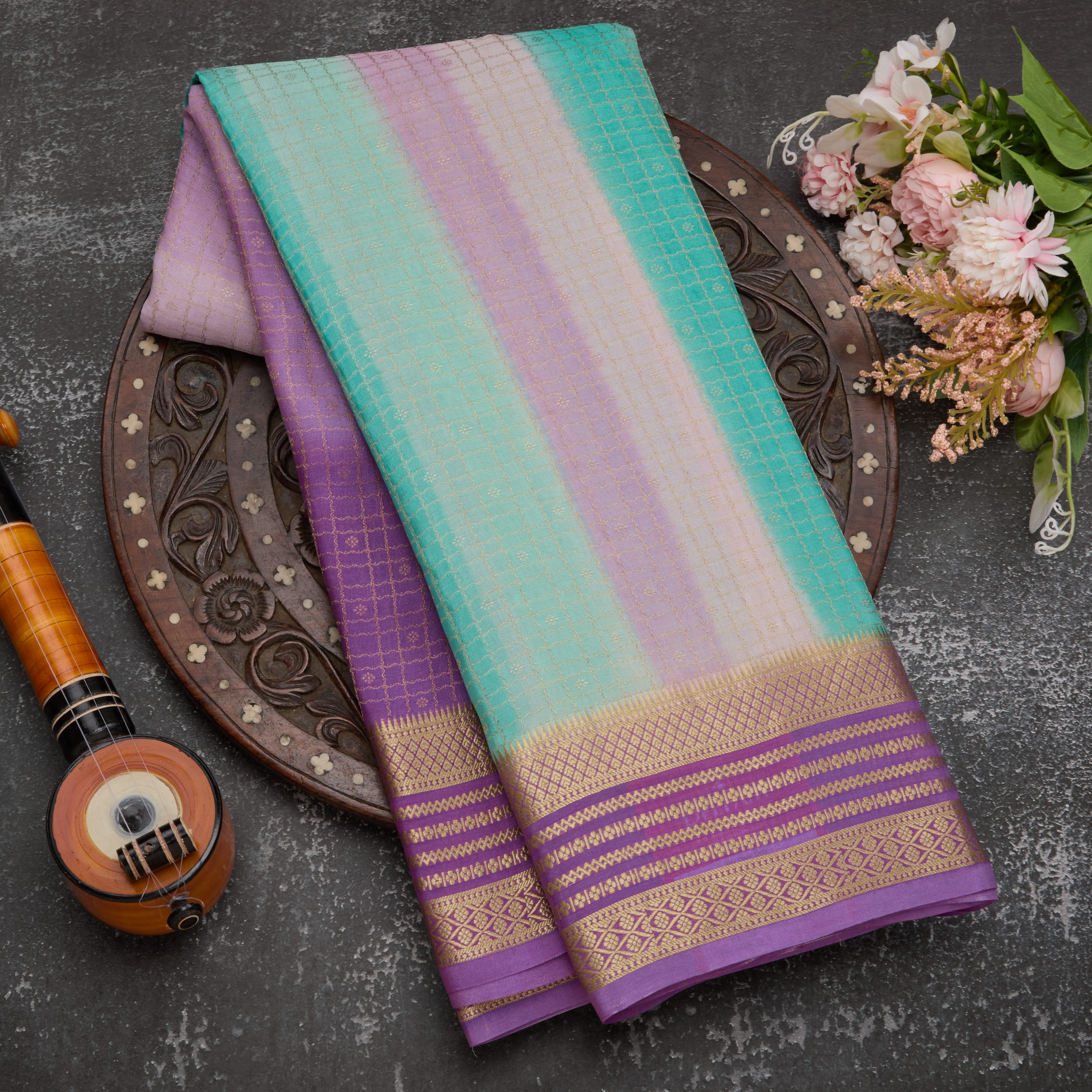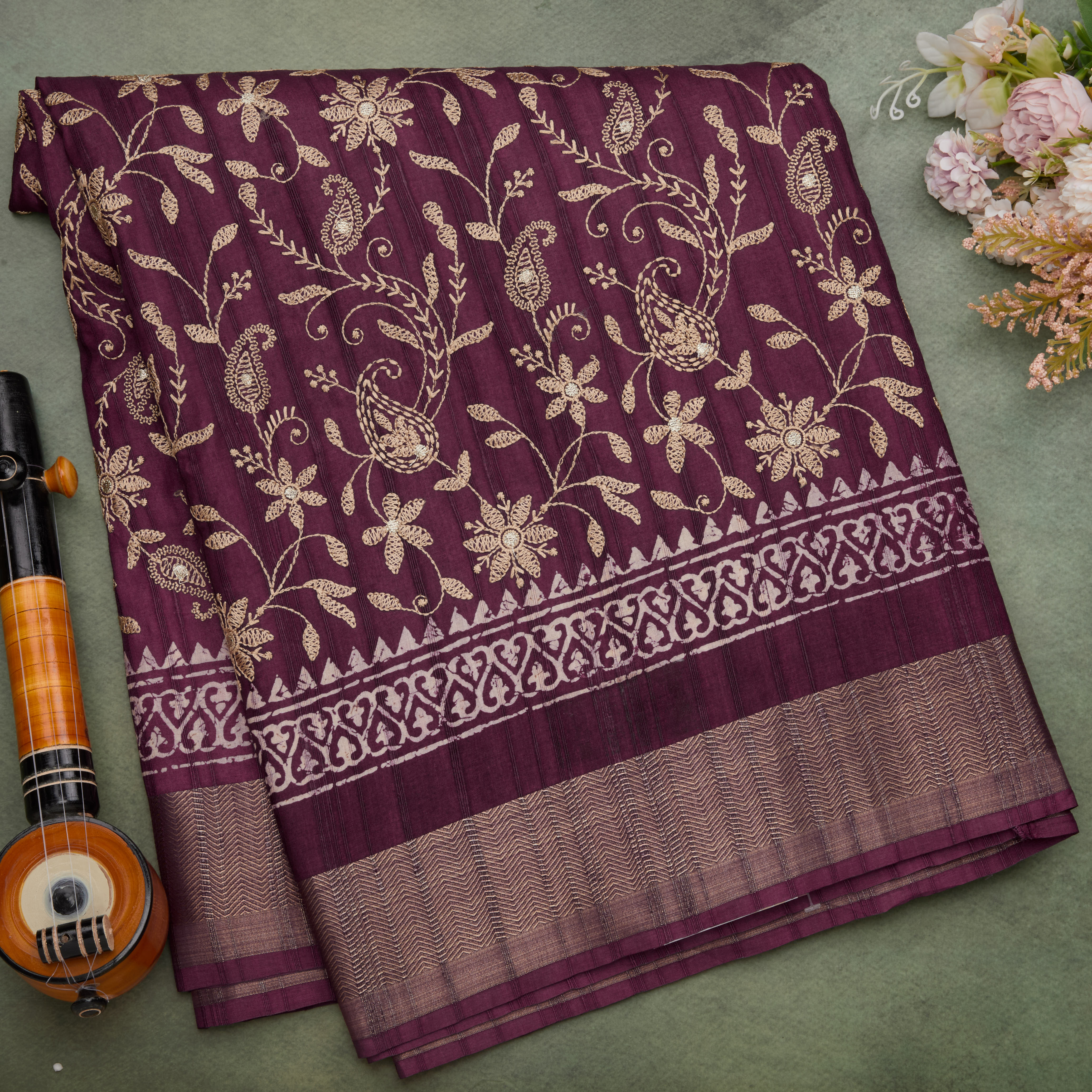Discover the Perfect Silk for Your Saree the Epitome of Elegance

Table of Contents
The saree, a drape of elegance and tradition, holds a special place in Indian culture. Choosing the right silk for your silk sarees can be overwhelming, with each variety boasting unique characteristics and a rich heritage. But fear not, for this blog will be your guide through the process of Which silk is best for a saree..
The Essence of Silk
Silk, a natural protein fiber woven from the cocoons of silkworms, is synonymous with luxury and grace. India, a land renowned for its silk-weaving traditions, boasts a multitude of regional specialties, each with its distinct charm. Let's delve into some of the most popular varieties:
Printed Pure Silk
Hailing from Kanchipuram in Tamil Nadu, these sarees are woven with intricately designed borders and motifs. Often featuring zari work (metallic threads), Printed pure silk sarees, is known for its strength, durability, and rich colour palette, making it ideal for formal occasions and heirloom pieces.
Banarasi Silk
Crafted in Varanasi, Uttar Pradesh, Banarasi soft silk sarees are famed for their intricate zari work
and brocade designs. Often featuring floral and paisley patterns, these sarees exude opulence and grandeur, perfect for weddings and grand festivities.
Mysore Silk
Mysore silk, woven in the Karnataka city of the same name, is known for its incorporation of pure silver and gold threads. The resultant fabric has a characteristic stiffness and a shimmering effect, making printed Mysore silk sarees a regal choice for special events.
Tussar Silk
This silk, cultivated from wild silk moths, has a slightly coarse texture and a natural golden sheen. Tussar silk sarees are known for their breathability and drape beautifully, making them perfect for both formal and casual wear. Popular in states like Bihar and Odisha, traditional Tussar silk sarees offer a more understated elegance.
Chanderi Silk
Woven in Madhya Pradesh, Chanderi silk sarees are known for their lightweight and sheer texture. Often featuring intricate zari borders and motifs, Chanderi silk offers a comfortable and elegant drape, ideal for summer wear and everyday occasions.
Patola Silk
This double ikat weave, originating from Gujarat, is known for its vibrant geometric patterns. The intricate dyeing process creates a mesmerizing effect, making Patola silk sarees prized possessions for special occasions.
Factors to Consider When Choosing Your Silk Saree
While the variety of silks is captivating, your choice should be guided by several factors:
Occasion: For weddings and formal events, Kanjeevaram, Banarasi, or Mysore silk sarees with their rich brocade work and zari are ideal. For everyday wear or summer occasions, Tussar or Chanderi silks offer a more comfortable and breathable option.
Budget: Silk sarees can range from moderately priced to heirloom investments. Tussar and Chanderi silks are generally more affordable, while Kanjeevaram, Banarasi, and Mysore silks command a premium due to their intricate work and materials.
Personal Style: Consider your comfort level. If you prefer lightweight fabrics, Chanderi or Tussar silk might be your pick. If you enjoy bolder aesthetics, Patola silk's geometric patterns could be a statement piece.
Drape and Care: Different silks drape differently. Kanjeevaram and Banarasi's silks hold their structure well, while Chanderi and Tussar silks offer a more fluid drape. Remember, each silk requires specific care. Research the recommended cleaning and storage methods to ensure your saree's longevity.
A Symphony of Choice
There's no single "best" silk for sarees. Each variety offers a unique melody in the grand symphony of Indian textiles. By understanding the characteristics of each silk and considering your personal needs, you can create a harmonious composition that reflects your style and celebrates the rich heritage of Indian craftsmanship.
A Few Additional Tips
Invest in Quality: A well-made silk saree can last for generations. Choose from reputable retailers who offer genuine silk and proper care instructions.
Explore regional specialities: India boasts a treasure trove of silk weaving traditions. Look beyond the well-known varieties and discover the unique charm of silks like Paithani, Pochampally, and Uppada.
Touch and feel the fabric: Whenever possible, visit a store and experience the silk's texture and drape firsthand. This will help you make a more informed decision.
With this knowledge, you can embark on your journey to find the perfect silk saree, a garment that embodies elegance and whispers a tale of Indian heritage. If you are interested in knowing why semi-cotton sarees are taking over in 2024 please give it a read.







